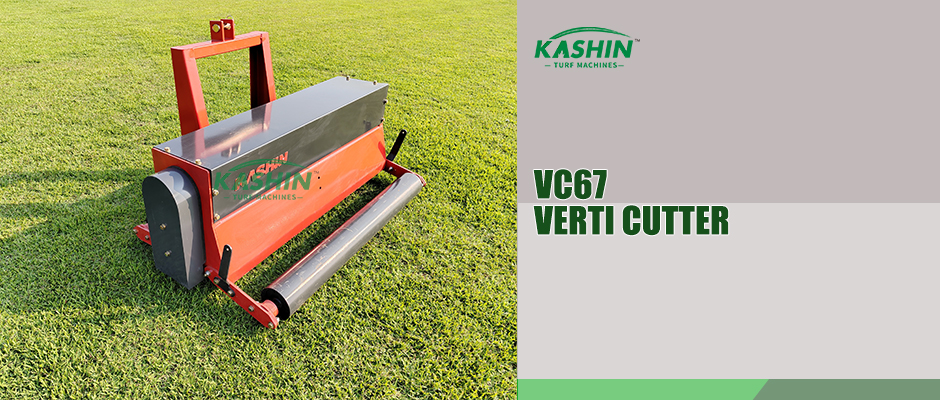1. Pruning
(1) Clean the greens every time they are pruned to see if there are any foreign objects. Branches, stones, fruit shells, metal objects and other hard objects must be removed, otherwise they will be embedded in the green turf and damage the blades. The ball impact marks must be repaired. Improper repair of the ball impact marks will cause many depressions during trimming.
(2) The pruning machine must use a dedicated green pruning machine. The frequency of mowing is generally once a day, in the morning. Reducing the number of mowing times will cause the density of the lawn to decrease and the leaves to become wider. However, pruning can be stopped for at least one day when spreading sand, tilling or fertilizing. The optimal mowing height for green lawns is 4.8 to 6.4 mm, with a variation range of 3 to 7.6 mm. However, within the range that the lawn can tolerate, the lower the mowing height, the better.
(3) Pruning mode The direction of mowing usually needs to be changed every time. The direction change principle is one of the four directions, so as to reduce the production of one-way tillering buds. This method can be designed into the directions of the clock dial, such as 12 o’clock to 6 o’clock, 3 o’clock to 9 o’clock, 4:30 to 10:30, and finally 1:30 to 7:30. After the direction ends, the cycle is repeated, resulting in an obvious strip pattern in the form of a square pattern.
(4) Removal of prunings. The grass clippings are collected in a grass box and then removed from the green. Otherwise, the grass clippings can make the underlying lawn less breathable and cause pests and diseases.
(5) Control of unidirectional tillering buds in lawns. Attachments such as greens mower brush combs can be used to correct or prevent the development of one-way tillers. When the turf is actively growing, light vertical mowing of the greens every 5 to 10 days can correct the problem of one-way tillering. The comb or vertical mower should be adjusted to the surface of the lawn.
(6) Attention should be paid during pruning: operators should wear flat shoes to avoid nailed soles from causing damage to the green; when pruning, care should be taken to prevent gasoline, engine oil or diesel from leaking and falling on the lawn to cause small dead spots; pay attention to the turf Scratches usually occur when the turf is not tight enough or the grass cushion is too thick and the surface is not smooth enough. The grass cushion swells after being soaked after rain, which can easily make the turf soft. It should be adjusted to 1.6 mm and trimmed every few days or every 1 to 2 days.

2. Fertilization
(1) Fertilization time: Usually complete fertilizers containing nitrogen, phosphorus, and potassium are applied in spring or autumn, and nitrogen fertilizers need to be supplemented regularly during the rest of the growing season.
(2) Fertilization method: It is better to apply dry fertilizer with a centrifugal spreader, and finally apply it in the vertical direction. Especially for water-soluble fertilizers, they are usually applied when the leaves are dry and watered immediately after application to avoid burning the leaves. In order to prevent the lawn from being burnt by fertilizer, you should pay attention to: do not fertilize the grass that has just been cut; do not mow the grass on the day of fertilization; do not install a grass collector when mowing; puncture the green before fertilizing. Adequate nitrogen fertilizer must be applied to maintain turfgrass basal bud density, adequate recovery potential, basal bud growth rate, and maintain normal color. Generally, 1-2.5g/m2 of nitrogen is applied every 10-15 days. Potassium fertilizer: Since the sandy bed of the green lawn is heavy, potassium fertilizer leaks easily, which is detrimental to maintaining the heat resistance, cold resistance, drought resistance and trampling resistance of the lawn and promoting root growth. Finally, the potassium fertilization plan is determined based on the soil analysis results. Generally, the demand for potassium fertilizer is 50% to 70% of nitrogen. Sometimes the effect of applying more potassium fertilizer is more ideal. In periods of high temperature, drought and long trampling time, apply potassium fertilizer every 20 to 30 days. Phosphate fertilizer: The demand for phosphate fertilizer is small and should also be carried out based on the results of soil analysis. It is usually carried out in spring and late summer and early autumn.
3. Irrigation
Irrigation is one of the most important maintenance measures for green lawn care. This should be determined based on the specific needs of each green and its influencing factors.
Post time: Sep-06-2024
